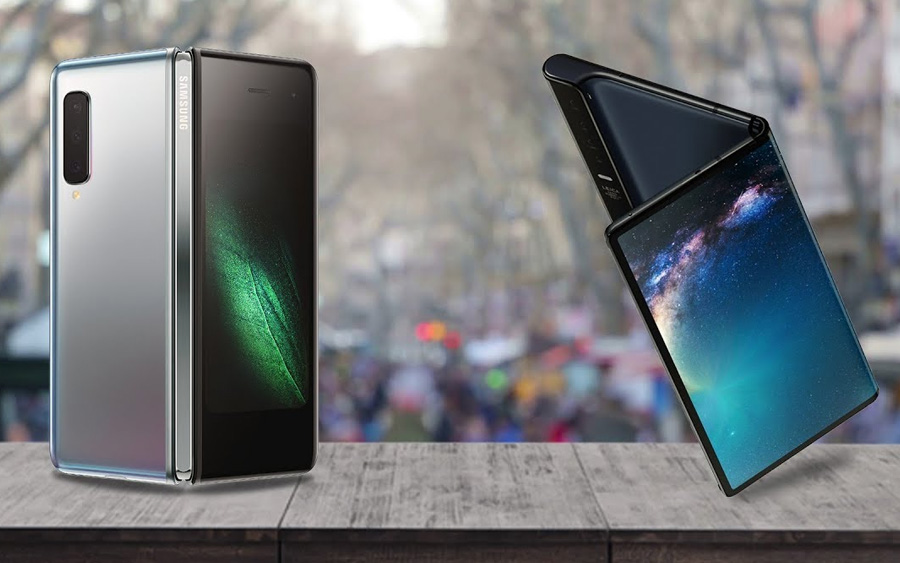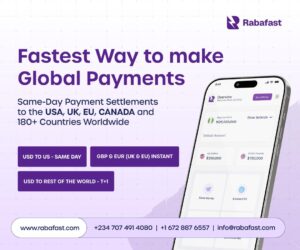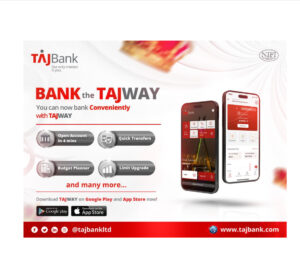In 2006, when Nokia released its N93 model, screen folding wasn’t among its features; still, its specification wowed the mobile phone market — a phone that could be folded into a camcorder. It was an innovation that couldn’t be matched. If only we knew the plans technology had in store, such a thought would have been brushed aside.
Fast-forward to the 21st-century, technology has aided human imagination to run wild, Samsung and Huawei’s recent innovations serve as proof. The quest to be the first with disruptive products has given birth to new innovations like the Samsung Galaxy Fold and Huawei Mate X foldable phones.
Why the hype for foldable smartphones?
Recently unveiled to smartphone enthusiasts in search of something new, different, and with the wow factor, the foldable smartphone model has been the talk of the town among markets globally. With the market size of about 20 million smartphone users, Nigeria is not left out.
Foldable smartphones are not new, but they are barely months old among gadgets enthusiasts. The first was unveiled to the markets by a California-based start-up, Royale, back in November 2018, in Beijing, China.
The FlexPai mobile phone was made available to consumers in a flash sale, with the price ranging from $1,295.49 to $1,871.33 (8,999 to 12,999 yuan), and the company disclosing that delivery of the smartphone would start in December 2018, as reported by CNBC.
Foldable or bendable, depending on your preferred word, the innovation is a break from the norm. It is urbanisation making its presence felt in the traditional mobile phone market. Pre-foldable phones, the market was flooded with single and tablet products, but now, smartphone users have two-in-one smartphone options.
The foldable phone functions as a portable device and a high-definition large screen tablet, with the capability to support dual-screen use, but still fit perfectly in your pocket (depending on your trouser size).
Separating hype from fact
Though Samsung and Huawei were beaten to the market by a little-known tech start-up, that’s no cause for alarm. Before Samsung and Huawei unveiled their foldable phones, you probably had no idea that the product was already in the mobile market; that’s what global brands bring to the table. Their spotlight makes an already existing product new.
The hype is all that is known now, while the details are somewhat limited, as these two global brands are yet to make their products available in the mobile market. Even during the unveiling, Samsung didn’t provide the opportunity to have a feel of their Galaxy Fold.
After the public presentation of Galaxy Fold, it wasn’t made available at their presentation stand, giving room for speculations that the product might not deliver the hype as expected by phone enthusiasts. The only person that had a feel of the phone was the company representative who made the presentation to the audience.
It should be noted that phone enthusiasts are often advised to separate emotion from presentation, as they are often well-thought-out, designed and well-structured to wow the audience. No smartphone company presents its innovations to displease the audience.
While for Huawei’s Mate X, the longest some journalists were allowed to experience the innovation was within a few minutes. What satisfaction is derived from a test run of a new and unfamiliar smartphone? So, while the hype is creatively documented, the facts are limited to the written specification and features.
Effect of being the first
Though Royale’s foldable phone beat Samsung and Huawei to the market, its Flexpai, according to an industry expert, CNET, was plagued with some flaws, with its promising hardware beset by buggy software that wasn’t quite ready to handle the new design.
Being the first has its drawbacks, so Samsung and Huawei have given the notion that theirs might just be on queue behind Flexpai by not making people’s imaginations go beyond the well-padded video and photo presentation.
There have been occasions where phone manufacturers recalled their products from the market due to manufacturing defects, like the Samsung Galaxy 7, which exploded after the battery generated excessive heat, and sometimes, resulted in fires.
Buy or Not
This is a new innovation. Be patient to avoid getting your hands burnt. Most of the first rollouts might be test runs, so it’s advisable to wait for post-launch reviews before you invest over N720,000 on a phone.
How will the Nigerian market react to foldable smartphones?
Samsung Galaxy Fold
Foldable phones are not the next wave in the Nigerian mobile market because of the price and luxury symbol they portray. Though there are luxury phone users like the iPhone generation, the excitement about the iPhone can’t be compared to the wave of the Galaxy Fold.
Samsung users are used to portable smartphones, and this innovation is not strong enough to disrupt the culture. Coupled with the cost and the popular belief that Samsung sells screens rather than phones, these are likely to cast doubt on the interest of smartphone users in Nigeria, where products are relatively on the high side.
But Samsung is one of the largest phone brands in the world, and if there’s one thing that a household name does, it is to sell products. The phone launches on April 26.
Huawei Mate X
Huawei is a global brand, but compared to Samsung, it’s yet to penetrate the Nigerian mobile phone market, mostly due to its positioning as a luxury brand which pits it against the likes of iPhone.
Huawei might hit a milestone with its fold model in the Asian and Western market, but its sales in Nigeria might be a rough drive as it will be competing with a household name called Samsung.
Compared to Galaxy Fold, Huawei’s Mate X is thinner, has a bigger screen, and folds flatter, but the price, which would have been its saving grace among first adopters weighing prices, is higher than Galaxy Fold.
Possible competitors
Foldable phones might be the next wave in the global mobile market, but little success might be recorded in the Nigerian mobile market, because not all low-cost brands like Infinix, Tecno, Nokia, and many more will be quick to invest in such a wave, considering their target market which revolves around low budget or middle-class smartphone users.
The number of smartphone users has grown tremendously as a result of the entry of low budget smartphones, and it won’t grow if all brands decide to phase out the traditional portable smartphone devices for foldable phones which cost about $2000 and more (over N720,000). E-commerce platform, Jumia in its 2018 Mobile Report stated that Infinix is its highest purchased smartphone in Nigeria.
Samsung Galaxy Fold Specs
- Display size, resolution: 4.6-inch Super AMOLED; 7.3-inch QXGA+ Dynamic AMOLED
- Mobile software: Android 9.0 with Samsung One UI
- Camera: 16-megapixel (ultra wide-angle), 12-megapixel (wide-angle), 12-megapixel (telephoto)
- Front-facing camera: Two — 10-megapixel, 8-megapixel 3D depth
- Processor: Octa-core Qualcomm Snapdragon 855
- Storage: 512GB
- RAM: 12GB
- Expandable storage: None
- Battery: 4,380
- Fingerprint sensor: Right side of phone
- Special features: Foldable display, wireless charging, fast charging
- Connector: N/A
- Product price: (USD) $1,980
Huawei Mate X Specs
- Display: 6.6-inch (2,480×1,148 pixels); 6.38-inch (2,480×892); 8-inch OLED (2,480×2,200)
- Camera: 4 rear cameras
- Mobile software: N/A
- Front facing camera: At least one
- Storage: 512GB
- RAM: 8GB
- Fingerprint: Fingerprint reader integrated into power button
- Processor: in-house Kirin 980 processor
- Special features: Foldable display, fast charging
- Connector: USB-C
- Battery: 4,500-mAh capacity split between two batteries
- Product price: $2,600
















2600 phone that is crazy ><
The exploding phone was Samsung note 7